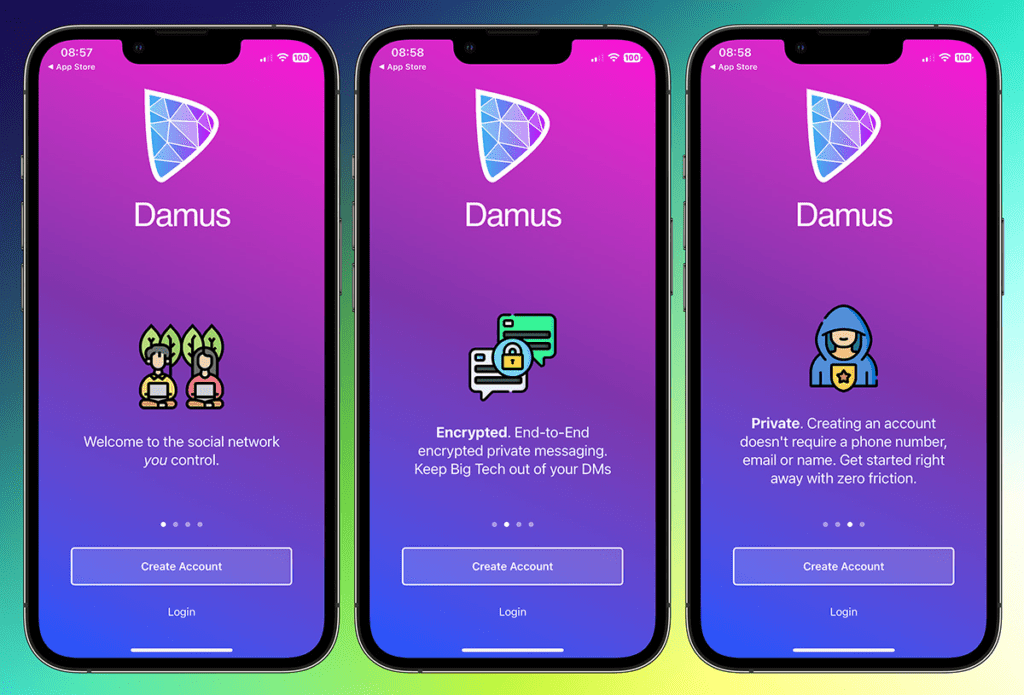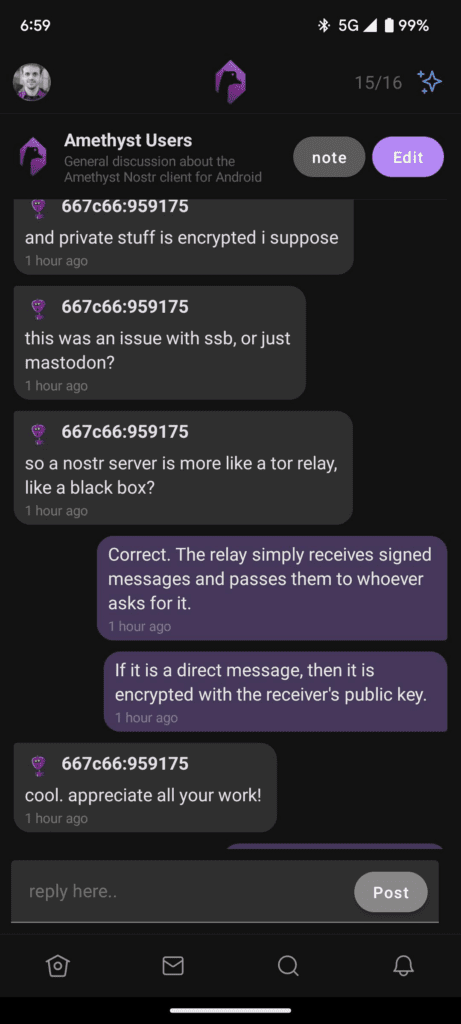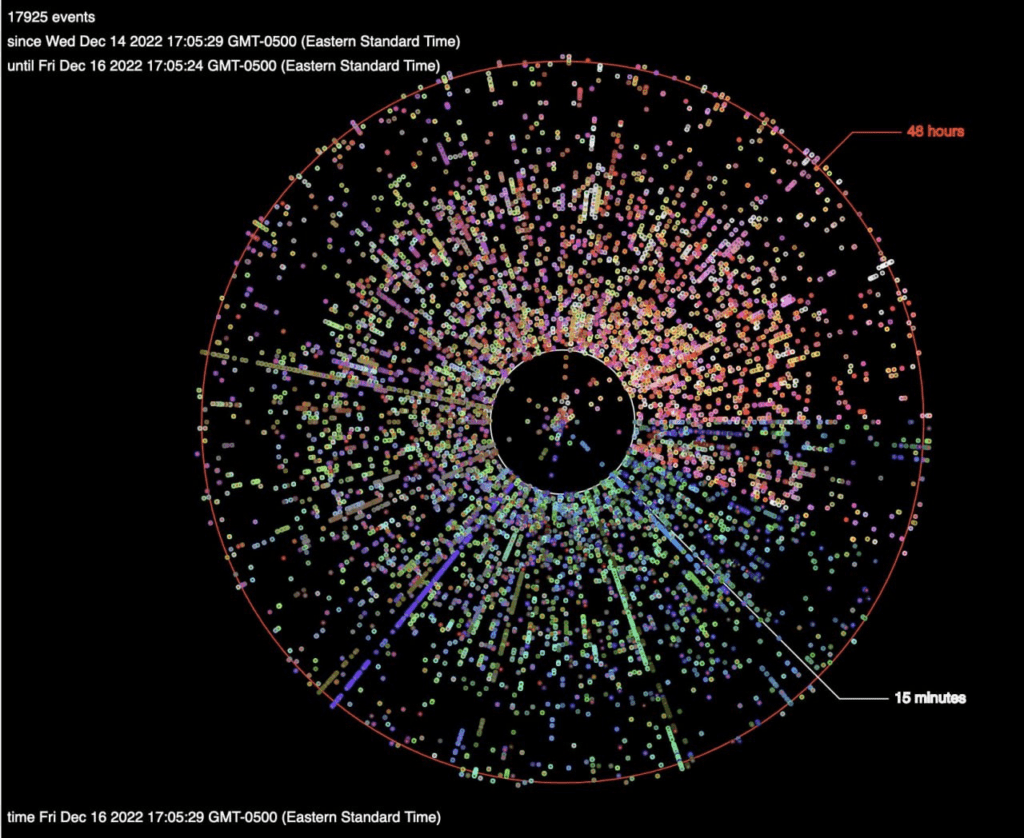Social media, for better or worse, is an integral part of our online lives; it’s how we source information, react to news and communicate with one another. In the earlier days of social networking, apps took a more lenient approach due to their focus on growth. Still, as these apps needed to generate a return for investors through advertising, the walls of censorship began to grow. Since then, Nostr was born to solve this need.

Background
This is a week of public key swipes, whether it is in the circle of. Twitter friends or. Facebook, the key event is the former CEO of Twitter, Jack Dorsey, tweeted that. Damus and. Amethyst, social products based on the decentralized social protocol Nostr, have been separated.
It was launched on the Apple App Store and Google Play Store, and the website snort.social was also officially opened. Among them, the number of users of Damus has exceeded 72W in just a few days.
Although many product nouns are covered in one sentence, the relationship is actually very clear. Nostr is essentially an information transmission protocol for decentralized social scenarios, and Damus, Amethyst, and snort.social are third-party applications developed based on this protocol.

Why is there a demand scenario for Nostr?
The Internet people who have experienced the anti-monopoly years hate the abuse and infringement of data by centralized institutions but are unable to break away from the excellent application experience and the non-selective market.
In the final analysis, behind the social products are companies as institutions. In operation, the company is obliged to accept supervision and review. All its responsibilities are shareholders and the government of the place of registration. In essence, it pursues commercial success, not the ideal of freedom of speech.
The end result of anti-monopoly has always been that dragon-slaying warriors eventually become evil dragons. Since the central organization cannot do it and has no position to do it, the longing for freedom has given birth to a decentralized protocol that uses code to protect freedom: Nostr.
Nostr protocol architecture
In fact, Nostr is very concise and clear and can be summarized in one sentence:
Let everyone run a client program, and when they want to publish some information, sign the text with their own private key and send it to multiple repeaters. When you want to get information, you ask each repeater. The client verifies the obtained information with the help of its public key to judge the authenticity.
Role relationship
There are only two roles in the protocol: repeater and client
- Relay there can be any number of relays; the mission is to accept and store the information reported by the client and return the local query results according to the client’s request.
- Client, that is, there can be any number of clients, which are stored in the user’s device, and the core to be done is signature and verification.
From such a concise role relationship, it can be seen that the user client does not interact with other user clients, it is not in the form of P2P, and there is no need for interaction between relayers and no information communication between them, which also means There is no question of consensus level.
Generally speaking, it belongs to a structure of a strong client and a weak server (relay). Multiple servers can replace each other, thereby diluting its importance. This is also the basis of anti-censorship. Users have autonomy over relay The right to choose, which can lead to competition at the repeater level, greater capacity, faster speed, better network incentives, and the ability to filter spam.
Account system
Identities in Nostr consist of public and private keys. Therefore, without a password or a unique username (or the public key is the username), it is costless for anyone to create a new public-private key pair, which is essentially an existing relationship.
However, what is significantly different from previous decentralized social products is that it does not go to the chain at all, and it can be said that it has nothing to do with the chain itself but only applies the most conventional public-private key account system on the blockchain.
We can already see the role of public and private keys in many scenarios. For users who can accept the risk of self-controlled private key management, it is an excellent account weapon. There is EOA as the base, MPC as the optimization, and contracts The wallet is the carrier of the current account abstract AA.
Secondly, in front of the vast number of NFT players, they often encounter various whitelist Mint, which is also based on public and private key signatures and signature.
Operational behavior
Nostr’s NIP is a mechanism similar to the Ethereum EIP proposal, and. NIP-01 explains the content of each message.
From the perspective of the user client, we can perform the following operations.
Operation 1. Signature release information: EVENT
When users want to publish information, they use the private key stored in their local client to sign a string of content and finally generate the following JSON type of data.
The id here is actually calculated based on the combination of the current content [pubkey, created_at, kind, tags, content] by hashing. Because of the participation of time stamps, the id will not be repeated under normal circumstances.
Operation 2. Subscribe to the target event: REQ
As information transmission, there is a return when there is a return. The instruction REQ needs to send a random ID as the subscription ID to the repeater, as well as filter information. Currently, the supported settings of the protocol are as follows.
From the perspective of filter conditions, it is basically equivalent to paying attention to this function. It does not require the other party’s permission and can also pull the information released by the other party (in fact, the essence is public), and the filter is just a better definition. What time period, which one was released
Of course, due to the design of the repeater, it is possible that some repeaters do not store the information of the target user, so the user needs to try to pull it from different repeaters. Once the repeater hangs up, even all associated If the repeaters are all down, then this piece of information will be lost.
Operation 3. End subscription: CLOSE
The last type of information that the client can send to the repeater is the close command, that is, to close the subscription, so that the client will not continue to obtain the latest event information.
From a technical point of view, this protocol uses the subscription ID mode, which means that the repeater will establish a continuous websocket connection. Once the repeater receives the information of the user being followed, it will actively initiate a subscription to the client of the subscriber. Request to synchronize. Although this mode has a higher load on the repeater, it can also get data such as the number of real-time followers. It is a way to motivate users to publish more valuable information.
And there are multiple “e” and “p” in the protocol. Although this kind of information is not mandatory, it can make each relay address fission and spread among clients, which is the key to improving censorship resistance.

Nostr’s dilemma and how to break it
Through the review of role relationships, account systems, and operational behaviors in the Nostr protocol above, we can basically understand the operating principles of such a streamlined and elegant set of transmission protocols.
However, compared to everyone who also had the same questions as the Fourteenth Lord, is it that simple? Yes, the process of sorting out by the author is like doing a programming class homework for beginners in computer networks when I was a freshman, implementing a chat software for a local area network.
The explosion of Nostr is essentially the success of philosophical ideas. Only the minimum necessary elements are defined, and the control ability is released. Any developer, even a computer student in the first or second year, can develop a repeater service. The low access threshold brings a huge experience of competition.
It can be seen from the extended link at the end of the article that there have been 228 GitHub open-source implementation cases as of the publication of the article. This time, some of them also show full creativity in exploring commercialization.
The social scene has always been considered the Internet category with the deepest moat. Many of these demands can only be resolved after further optimization based on Nostr.
Dilemma 1. Social privacy issues
The current Nostr repeater is just a dump of simple JSON data. Clients are fetched through filters. This makes Nostr a common data-sharing platform between clients, so how to solve the scenario where there is a need for private information transmission? After all, even a social forum like Twitter will have the need for private messages.
The current better solution is the DH algorithm (Diffie-Hellman key exchange), a set of algorithms that came out in 1976. It is the first practical method of creating a shared secret over an unprotected channel. As long as the shared key is obtained, both parties using Nostr can publish encrypted information, thereby realizing private peer-to-peer communication. Since privacy often has the appeal of burning after reading, the storage cost of the server can be further reduced.
Dilemma 2. Anti-DOS problem
It is the repeater layer that will be attacked. At present, the Nostr protocol does not directly guide and determine how to make the repeater resist DOS attacks and spam, so it is also the focus of many repeater implementations.
Starting from payment, because the relay has a very high autonomy, then he can set the payment conditions; that is, some relay services only allow transactions that complete the payment to be published on it. With financial costs, it is the best spam filtering device.
Starting from the proof of work, it can also increase the mining cost of a single release of information. Although Nostr is basically irrelevant to the blockchain, the accounting system based on public and private keys and signatures allows it to attach requirements to published events. For example, how difficult it is to publish a certain id (based on the result of the hash calculation) (for example, the first 5 digits are 0), this is a publishing method that not only holds information but also has proof of work.
Dilemma 3. High-cost storage and spam screening
Although the repeaters do not need to share any information, they have a common desire to meet the user’s wishes and improve the user experience, then they will be happy to share some blacklists and communicate with each other to collect more information released by users so that they can inventory growing.
For the party that pays the cost, there must be a party that receives the benefit. Because the cost of resources such as online videos and pictures is high, and the ability to easily reduce it cannot be seen, there will inevitably be a small network based on the charging model. In the end, Nostr is data An isolated island, even if it is reachable, requires a cost.

Conclusion
Social is the pearl, and it is the category with the deepest moat on the Internet. This is because it has a strong network effect. The oligopoly effect brought by the social graph is particularly obvious, for example, in most social applications, including Tantan and Momo. The social end point of WeChat is actually WeChat, which makes it difficult for anyone to leave the social relationship accumulated on the network.
The network effect and monopoly advantages are largely derived from closure and permission. After users build their own circles, the cost of users quitting these platforms is very high because they cannot take away social relationships and graphs.
What social products are most afraid of is losing contact. Nostr has implemented the anti-censorship repeater logic, but it also brings uncertainty. There is a layer of separation between the message from the publishing end to the receiving end, 3 handshakes, and 4 waves. HTTP stable connection establishment conditions, which cannot be manually implemented by users.
Among the demands of social networking, the control demands of most user data may be weaker than the inner needs of users. In the early years, Qzone was all the rage. Later, when it was transferred to the mobile Internet, the huge difference between it and WeChat Moments was likes and comments. In terms of the two functions, the visibility of acquaintances and the visibility of all employees are distinct, and the follow-up results are obvious to all.
There are more advantages of Web2 social platforms, so I won’t list them one by one. Although Damus, which is based on Nostr, is famous for a while, it is full of various bugs on the whole. There is still a long way to go for a good experience.
DISCLAIMER: The Information on this website is provided as general market commentary and does not constitute investment advice. We encourage you to do your own research before investing.
Join us to keep track of news: https://linktr.ee/coincu
Website: coincu.com
Harold
Coincu News














